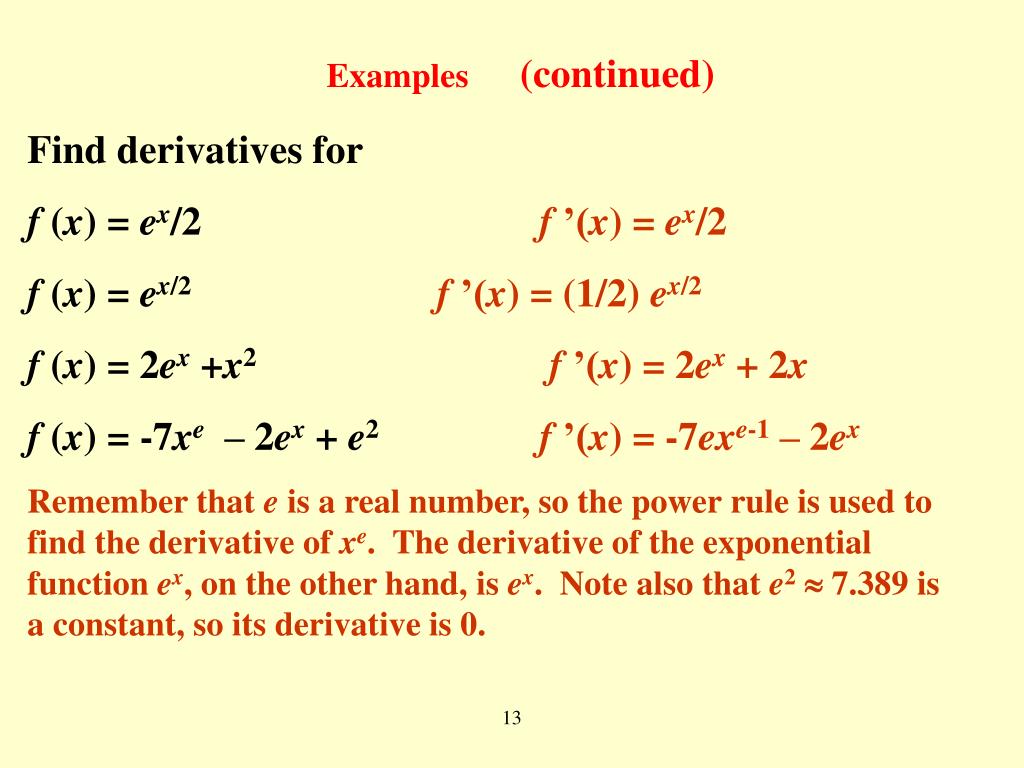Derivative Of Xex. Differentiate using the exponential rule which states that is where. My teacher says it is ex + xex.

Differentiate using the exponential rule which states that is where. The same thing happens for powers. Fun‑3 (eu) , fun‑3.a (lo) , fun‑3.a.4 (ek) is the only function that is the derivative of itself!
Multiply E X E X By 1 1.
As a particular case of this, we have, d dx e−x = − e−x. G ( y) for all x, y. (well, actually, is also the derivative of itself, but it's not a very interesting function.)
You Can Also Check Your Answers!
Materials, devices and simple circuits Evaluate d d x [ e x x] d d x [ e x x]. Correct option is c) f(x)=xe x.
This May Seem Like A Dumb Question, But I Don't Really Know The Steps Of How To Find This Derivative.
Oscillations redox reactions limits and derivatives motion in a plane mechanical properties of fluids class 12 atoms chemical kinetics moving charges and magnetism microbes in human welfare semiconductor electronics: The quotient rule gives different results when you swap the numerator and denominator; Differentiate using the exponential rule which states that is where.
By Using This Website, You Agree To Our Cookie Policy.
Find the derivative x raised to 2 using the first principle. The nth derivative of xe. F(x)= xe x 2 2.
(C) F(5) (X), The Fifth Derivative Of F, Where ) = Xex F (X) = Xe X + Xe X = 1 · E X + Xe F (X) = E X + E X + Xe X = 2 · E X + Xe X F(3)(X) =2 Ex +X Xex 3 ·X X F(4)(X) = 4 · E X + Xe F(5)(X) = 5 · E X + Xe The Inductive Step In The Proof Of This For The General Case Looks Like:
I am trying to prove the derivative of $f(x) = xe^x$ is $f'(x) = e^x + xe^x$ from first principles. Given a function ' g ' whcih has a derivative g ′ ( x) for every real ' x ' and which satisfy g ′ ( 0) = 2 and g ( x + y) = e y. The derivative calculator supports computing first, second,., fifth derivatives as well as differentiating functions with many variables (partial derivatives), implicit differentiation and calculating roots/zeros.